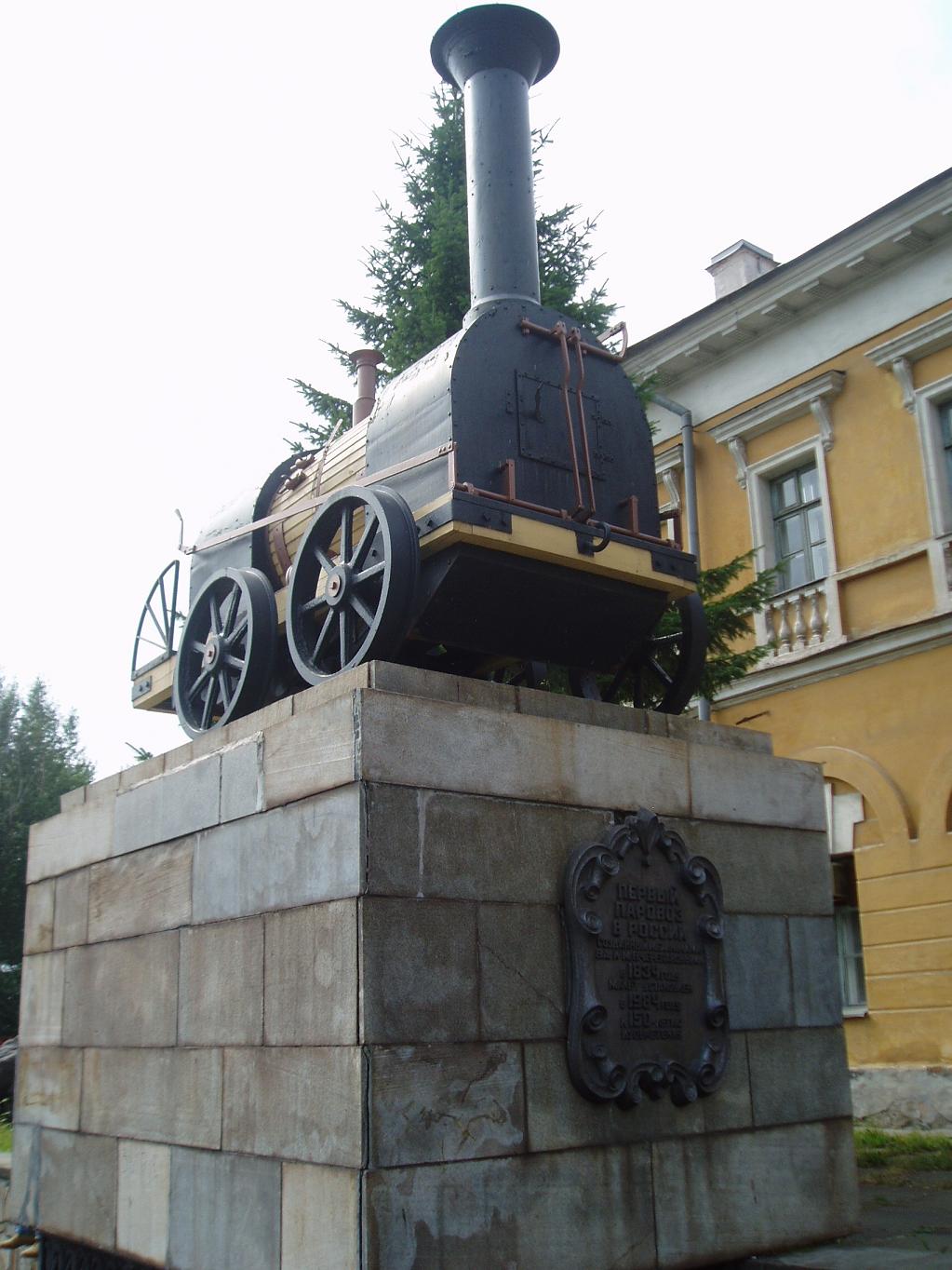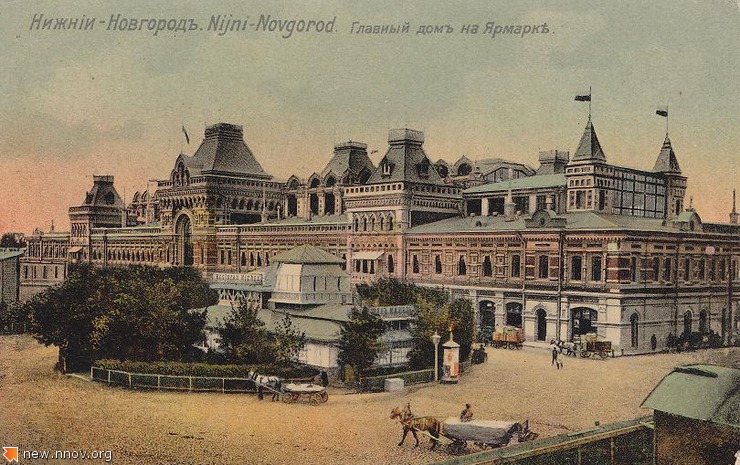|
Nizhnyi Tagil
Nizhny Tagil ( rus, Нижний Тагил, p=ˈnʲiʐnʲɪj tɐˈgʲil) is a city in Sverdlovsk Oblast, Russia, located east of the boundary between Asia and Europe. Population: History The prehistory of Nizhny Tagil dates back to the mid-16th century, when the Stroganovs received the right to possess land by the Kama and Chusovaya basins. In 1579 they founded the first settlement, the Utkin sloboda, by the river Utka, the mouth of Chusoya. Fateyevo, the first Russian village in the Tagil region, was founded in 1665. In 1696, by the order of Tsar Peter the Great, the Vysokogorsky iron ore quarry was opened. Voevode Dmitry Protasyev was elected to search for iron and magnetic ores. The deposits were particularly rich, and included lodes of pure magnetic iron. The surrounding landscape provided everything needed for a successful and productive mining and smelting operation — rivers for transport, forests for fuel, and suitable climate. Several years later, the Tsar i ... [...More Info...] [...Related Items...] OR: [Wikipedia] [Google] [Baidu] |
Sverdlovsk Oblast
Sverdlovsk Oblast ( rus, Свердловская область, Sverdlovskaya oblast) is a federal subject (an oblast) of Russia located in the Ural Federal District. Its administrative center is the city of Yekaterinburg, formerly known as Sverdlovsk. Its population is 4,297,747 (according to the 2010 Census). Geography Most of the oblast is spread over the eastern slopes of the Middle and North Urals and the Western Siberian Plain. Only in the southwest does the oblast stretch onto the western slopes of the Ural Mountains. The highest mountains all rise in the North Urals, Konzhakovsky Kamen at and Denezhkin Kamen at . The Middle Urals is mostly hilly country with no discernible peaks; the mean elevation is closer to above sea level. Principal rivers include the Tavda, the Tura, the Chusovaya, and the Ufa, the latter two being tributaries of the Kama. Sverdlovsk Oblast borders with, clockwise from the west, Perm Krai, the Komi Republic, Khanty–Mansi Autonomo ... [...More Info...] [...Related Items...] OR: [Wikipedia] [Google] [Baidu] |
T72monumentTagil
T7 or T-7 may refer to: Biology * Thoracic vertebra 7 * Thoracic spinal nerve 7 * T7 phage, a virus used in the study of biological systems ** T7 DNA Helicase, a hexameric motor protein ** T7 RNA polymerase, an RNA polymerase that catalyzes the formation of RNA Transport * Île-de-France tramway Line 7 * Olympic Park line, a service of Sydney Trains * Twin Jet's IATA airline code * T7 Bristol–Chepstow, a bus route in the United Kingdom Vehicles * T-7 (rocket), China's first sounding rocket * Boeing T-7 Red Hawk, an American advanced jet trainer aircraft * Fuji T-7, a Japanese primary trainer aircraft * Yugoslav torpedo boat ''T7'' * T7 Armored Car, a prototype vehicle for the US Army * T7 Combat Car, a prototype vehicle for the US Army * T-7 Navigator or Beechcraft Model 18, a trainer aircraft used by the United States armed forces * T7, a model of the OS T1000 train of the Oslo Metro * LSWR T7 class, an experimental 4-2-2-0 steam locomotive built in 1897 Other uses * ... [...More Info...] [...Related Items...] OR: [Wikipedia] [Google] [Baidu] |
Nizhniy Tagil StAlexander Nyevsky Cathedral
Nizhny Novgorod ( ; rus, links=no, Нижний Новгород, a=Ru-Nizhny Novgorod.ogg, p=ˈnʲiʐnʲɪj ˈnovɡərət ), colloquially shortened to Nizhny, from the 13th to the 17th century Novgorod of the Lower Land, formerly known as Gorky (, ; 1932–1990), is the administrative centre of Nizhny Novgorod Oblast and the Volga Federal District. The city is located at the confluence of the Oka and the Volga rivers in Central Russia, with a population of over 1.2 million residents, up to roughly 1.7 million residents in the urban agglomeration. Nizhny Novgorod is the sixth-largest city in Russia, the second-most populous city on the Volga, as well as the Volga Federal District. It is an important economic, transportation, scientific, educational and cultural center in Russia and the vast Volga-Vyatka economic region, and is the main center of river tourism in Russia. In the historic part of the city there are many universities, theaters, museums and churches. The city was ... [...More Info...] [...Related Items...] OR: [Wikipedia] [Google] [Baidu] |
Nizhniy Tagil Watchtower
Nizhny Novgorod ( ; rus, links=no, Нижний Новгород, a=Ru-Nizhny Novgorod.ogg, p=ˈnʲiʐnʲɪj ˈnovɡərət ), colloquially shortened to Nizhny, from the 13th to the 17th century Novgorod of the Lower Land, formerly known as Gorky (, ; 1932–1990), is the administrative centre of Nizhny Novgorod Oblast and the Volga Federal District. The city is located at the confluence of the Oka and the Volga rivers in Central Russia, with a population of over 1.2 million residents, up to roughly 1.7 million residents in the urban agglomeration. Nizhny Novgorod is the sixth-largest city in Russia, the second-most populous city on the Volga, as well as the Volga Federal District. It is an important economic, transportation, scientific, educational and cultural center in Russia and the vast Volga-Vyatka economic region, and is the main center of river tourism in Russia. In the historic part of the city there are many universities, theaters, museums and churches. The city was ... [...More Info...] [...Related Items...] OR: [Wikipedia] [Google] [Baidu] |
Nizhniy Tagil HiRes Panorama
Nizhny Novgorod ( ; rus, links=no, Нижний Новгород, a=Ru-Nizhny Novgorod.ogg, p=ˈnʲiʐnʲɪj ˈnovɡərət ), colloquially shortened to Nizhny, from the 13th to the 17th century Novgorod of the Lower Land, formerly known as Gorky (, ; 1932–1990), is the administrative centre of Nizhny Novgorod Oblast and the Volga Federal District. The city is located at the confluence of the Oka (river), Oka and the Volga rivers in Central Russia, with a population of over 1.2 million residents, up to roughly 1.7 million residents in the urban agglomeration. Nizhny Novgorod is the List of cities and towns in Russia by population, sixth-largest city in Russia, the Volga#Biggest cities on the shores of the Volga, second-most populous city on the Volga, as well as the Volga Federal District. It is an important economic, transportation, scientific, educational and cultural center in Russia and the vast Volga-Vyatka economic region, and is the main center of river tourism in Russia. ... [...More Info...] [...Related Items...] OR: [Wikipedia] [Google] [Baidu] |
Verkhnyaya Salda
Verkhnyaya Salda (russian: Ве́рхняя Салда) is a town in Sverdlovsk Oblast, Russia, located on the Salda River (right tributary of the Tagil), north of Yekaterinburg. Population: History It was founded in 1778; town status was granted to it in 1938. Economy Verkhnaya Salda is known for its metallurgical plant VSMPO-AVISMA Corporation—the world's largest producer of titanium Titanium is a chemical element with the symbol Ti and atomic number 22. Found in nature only as an oxide, it can be reduced to produce a lustrous transition metal with a silver color, low density, and high strength, resistant to corrosion i .... References {{Use mdy dates, date=December 2012 Cities and towns in Sverdlovsk Oblast Verkhotursky Uyezd ... [...More Info...] [...Related Items...] OR: [Wikipedia] [Google] [Baidu] |
Alapayevsk
Alapayevsk (russian: Алапа́евск) is a town in Sverdlovsk Oblast, Russia, located at the confluence of the Neyva and Alapaikha rivers. Population: 44,263 ( 2002 census); 50,060 ( 1989 census); 49,000 (1968). History Alapayevsk is one of the oldest centers of ferrous metallurgy in the Urals with the first factory built in 1704. The town proper was founded in 1781. Murder of Russian Imperial family members On July 18, 1918, the day after the shooting at Yekaterinburg of the last tsar, Nicholas II and family, other members of the extended Russian royal family, the Romanovs, including a nun, and their servants, met a brutal death there being thrown down a mineshaft near Alapayevsk by the local Bolsheviks on the orders of the Ural Soviet. All except Grand Duke Sergey Mikhaylovich (who was the first one to die; he was shot before they could throw him in) survived the fall, hand-grenades were thrown down after them killing Grand Duke Sergey's secretary, Fyodor ... [...More Info...] [...Related Items...] OR: [Wikipedia] [Google] [Baidu] |
Perm, Russia
Perm (russian: Пермь, p=pʲermʲ), previously known as Yagoshikha (Ягошиха) (1723–1781), and Molotov (Молотов) (1940–1957), is the largest city and the administrative centre of Perm Krai, Russia. The city is located on the banks of the Kama River, near the Ural Mountains, covering an area of , with a population of over one million residents. Perm is the fifteenth-largest city in Russia, and the fifth-largest city in the Volga Federal District. In 1723, a copper-smelting works was founded at the village of ''Yagoshikha''. In 1781 the settlement of Yagoshikha became the town of ''Perm''. Perm's position on the navigable Kama River, leading to the Volga, and on the Siberian Route across the Ural Mountains, helped it become an important trade and manufacturing centre. It also lay along the Trans-Siberian Railway. Perm grew considerably as industrialization proceeded in the Urals during the Soviet period, and in 1940 was named ''Molotov'' in honour of V ... [...More Info...] [...Related Items...] OR: [Wikipedia] [Google] [Baidu] |
Serov (town)
Serov (russian: Серо́в) is a mining and commercial town in Sverdlovsk Oblast, Russia, located on the eastern foothills of the Ural Mountains, on the left bank of the Kakva River (a tributary of the Sosva), about north of Yekaterinburg. Population: History Archaeological evidence suggests that the Mansi or their ancestors populated the area of Serov as early as 1000 BCE. In the early days of the Russian colonization of Siberia the district had only a few minor villages. The situation changed in 1893, when the chief manager of Bogoslovsk Mining District, Alexander Auerbakh, proposed a construction of a cast iron and rail plant on the Kakva River near the end of an existing railroad. This year the construction of a workers' settlement began. It was named Nadezhdinsk after Nadezhda Polovtsova, the owner of Bogoslovsk Mining District. The first steel and rails in Nadezhdinsk were produced in 1896. Nadezhdinsk became an important supplier of rails for the Trans-S ... [...More Info...] [...Related Items...] OR: [Wikipedia] [Google] [Baidu] |
Yekaterinburg
Yekaterinburg ( ; rus, Екатеринбург, p=jɪkətʲɪrʲɪnˈburk), alternatively romanized as Ekaterinburg and formerly known as Sverdlovsk ( rus, Свердло́вск, , svʲɪrˈdlofsk, 1924–1991), is a city and the administrative centre of Sverdlovsk Oblast and the Ural Federal District, Russia. The city is located on the Iset River between the Volga-Ural region and Siberia, with a population of roughly 1.5 million residents, up to 2.2 million residents in the urban agglomeration. Yekaterinburg is the fourth-largest city in Russia, the largest city in the Ural Federal District, and one of Russia's main cultural and industrial centres. Yekaterinburg has been dubbed the "Third capital of Russia", as it is ranked third by the size of its economy, culture, transportation and tourism. Yekaterinburg was founded on 18 November 1723 and named after the Russian emperor Peter the Great's wife, who after his death became Catherine I, Yekaterina being the Russian fo ... [...More Info...] [...Related Items...] OR: [Wikipedia] [Google] [Baidu] |
Volcano
A volcano is a rupture in the Crust (geology), crust of a Planet#Planetary-mass objects, planetary-mass object, such as Earth, that allows hot lava, volcanic ash, and volcanic gas, gases to escape from a magma chamber below the surface. On Earth, volcanoes are most often found where list of tectonic plates, tectonic plates are divergent boundary, diverging or convergent boundary, converging, and most are found underwater. For example, a mid-ocean ridge, such as the Mid-Atlantic Ridge, has volcanoes caused by divergent tectonic plates whereas the Pacific Ring of Fire has volcanoes caused by convergent tectonic plates. Volcanoes can also form where there is stretching and thinning of the crust's plates, such as in the East African Rift and the Wells Gray-Clearwater volcanic field and Rio Grande rift in North America. Volcanism away from plate boundaries has been postulated to arise from upwelling diapirs from the core–mantle boundary, deep in the Earth. This results in hotspot ... [...More Info...] [...Related Items...] OR: [Wikipedia] [Google] [Baidu] |





.png)


